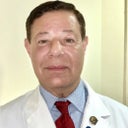I have been getting botox for a couple years for the crows feet area and it always wore off too quickly. I tried Dysport (same thing) and recently I tried the Xeomine. Non work. Within 2 weeks it looks like I had nothing done. I am 38 and very active. I know resistance to these products is very rare, could I be in that percentage? Is there an alternative?
Answers (8)
From board-certified doctors and trusted medical professionals
Dr. Nelson Lee Novick, MD

Dr. Nelson Lee Novick, MD
Dermatologic Surgeon, Board Certified in Dermatology
Answer
Dr. Houtan Chaboki, MD

Dr. Houtan Chaboki, MD
Board Certified Facial Plastic Surgeon
Answer
Dr. Michael I. Echavez, MD

Dr. Michael I. Echavez, MD
Board Certified Facial Plastic Surgeon
Answer
Dr. Michele S. Green, MD
Dr. Michele S. Green, MD
Board Certified Dermatologist
Answer
Dr. William B. Rosenblatt, MD
Dr. William B. Rosenblatt, MD
Board Certified Plastic Surgeon
Answer
Dr. Somyos Kunachak, MD - Account Suspended
Dr. Somyos Kunachak, MD - Account Suspended
Facial Plastic Surgeon
Answer
Dr. George Commons, MD (retired)
Dr. George Commons, MD (retired)
Board Certified Plastic Surgeon
Answer
Dr. F. Victor Rueckl, MD (in memoriam)
Dr. F. Victor Rueckl, MD (in memoriam)
Board Certified Dermatologist
Answer
More Botox Questions
See all Botox Q&AWE SEND PRETTY
EMAILS
What’s trending? Who’s turning heads? Which TikTok myths need busting? We’ve got you. No fluff, no gatekeeping—just real talk. Get our free, unfiltered newsletter.